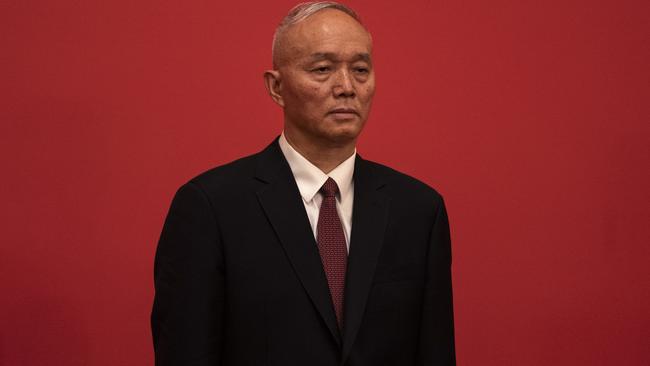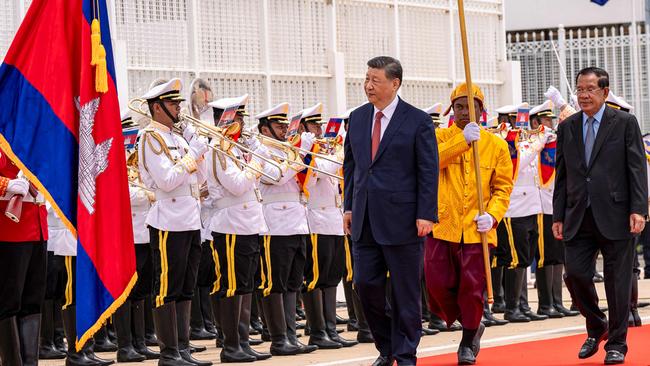Breakdown in US-China relations raises spectre of new Cold War

Today, with economic relations between the two careening off the rails, China and the US are headed toward what could be a Cold War that extends beyond trade – to deepening conflict or even military tension as both seek to form their own blocs.
The current scenario was once unthinkable. During President Trump’s first presidency, Washington and Beijing were both reluctant to throw their deep entanglements into complete disarray. Their first trade war played out over two years and involved frequent negotiations and fear of escalation on both sides.
This time, the two countries have effectively erected trade embargoes against each other in less than three months and are taking economic warfare into new territory. What is at stake is overall global security as well as economic stability for many years to come.
“The US and China are in a state of economic decoupling and there do not seem to be any guardrails to prevent escalations in trade tensions from spreading to other areas,” said Rick Waters, a former senior US diplomat who now runs the China centre at the Carnegie Endowment for Global Peace. “It’s becoming more difficult to argue that we’re not in a new Cold War.”

For Chinese leader Xi Jinping, it is an all-hands-on-deck moment that he and his inner circle have been preparing for since Trump’s first term. After the initial shock from the magnitude of Trump’s recent tariff hits, Beijing is now in full-blown retaliatory mode, vowing to “fight to the end.” And its tools to hit back at the US aren’t limited to economic weapons such as retaliatory tariffs, blacklists targeting US companies and restrictions on its exports of critical minerals.
According to people who consult with Chinese officials, Beijing’s recent statement that it is done with tit-for-tat tariff responses signals that it might be moving to other, noneconomic methods.
Both countries have accused each other of increasingly brazen cyberattacks. One option Beijing has, the people said, involves leveraging the data, call logs and other information it gathered from years of intrusions into computer networks at US ports, water utilities, airports and other targets.
The Wall Street Journal reported earlier this month that in a secret Geneva meeting in December with the outgoing Biden administration, Chinese officials linked a series of cyber assaults on US infrastructure to Washington’s support for Taiwan, the self-ruled island Beijing has pledged to bring under its fold.
Beijing could also step up strategic coercion against partners of the US, especially in the Indo-Pacific, at a time when the Trump administration’s commitment to providing security in the region appears to be in doubt.
Security threats
Alarms about the security threat from China, which had been rising within the US political and military establishment even before the latest cycle of tit-for-tat tariff increases, have ramped up further.
At an April 10 Senate hearing, Adm. Sam Paparo, head of US forces for the Indo-Pacific, called attention to China’s increased military activities near Taiwan, which he said threatened the security of the US and its allies.
On the US side, Trump has signalled he is willing to withdraw security guarantees for countries depending on American support unless they make economic concessions.
Behind the heightened risk of escalation beyond trade is a lack of effective communication between senior officials on both sides of the Pacific. Initially, Beijing hoped for dialogue but its insistence on formal diplomatic protocol proved to be a mismatch with a Trump team willing to engage only with those closest to Xi, in particular the Chinese leader’s chief of staff, Cai Qi, whose portfolio includes cybersecurity – a core concern for Washington.

In the face of Trump’s tariff assault, Beijing has clammed up. Most recently, as trade tensions spiral, Trump himself has indicated that he would like Xi to call him. Trump officials have also suggested to Chinese diplomats that Foreign Minister Wang Yi reach out to Secretary of State Marco Rubio, according to people familiar with the matter. So far, Beijing has refused to engage on either front.
Instead, in search of ways that can minimise political costs for the Xi leadership, policy advisers in Beijing are floating names including former Singaporean Prime Minister Lee Hsien Loong and Mohammed bin Salman, crown prince of Saudi Arabia, as potential intermediaries with Trump, the people said. But those discussions haven’t gone far enough in either capital, as neither side appears to be in a rush to negotiate.
In remarks to reporters Thursday, Trump reiterated that the US will “make a deal” with China. “We’ve had some very good talks,” he said, without elaborating, while adding, “I think we have a lot of time.”

Building blocs
As the communication stalemate continues, both powers are seeking to recruit allies in their battle. The Trump administration is currently seeking to cut deals with dozens of countries to co-operate in isolating China. Meanwhile, Xi and his senior lieutenants have fanned out in recent days, trying to pull trading partners away from the US.
In exchange for reductions in tariffs imposed by the US, the Trump administration is planning to pressure more than 70 nations to bar China from shipping goods through their countries to the American market, restrict Chinese investments and prevent cheap Chinese products from flooding their markets.
In short, as Trump told the Spanish-language program “Fox Noticias” last week, he may want countries to choose between the US and China.
But building coalitions is unlikely to be easy for either side. Even though Beijing’s manufacturing overdrive has antagonised many countries big and small, some of them, especially those in Asia that count China as one of their biggest trading partners and sources of investment, are finding it very hard to completely pivot to the US.
Xi’s recent tour to Southeast Asia highlights how this region is emerging as a key battleground for Beijing and Washington.
Just over a week before Xi arrived in Hanoi on Monday, Vietnamese leader To Lam agreed with Trump to discuss a deal to remove US tariffs in a call the American president described as “very productive.” Vietnam, also under Communist rule, has sought to improve economic ties with the US in recent years.
The call, just as Xi was getting ready for what was billed as a state visit to Vietnam, displeased Beijing, according to people familiar with the matter.

At the end of Xi’s visit, China and Vietnam made a joint statement promising to deepen their strategic partnership without much detail – suggesting Hanoi isn’t picking one side over the other, leaving its options open.
Another focus for Beijing’s charm offensive is Europe, which has been alarmed by Trump’s handling of Russia’s war in Ukraine.
On Wednesday, China named Li Chenggang, who for the past four years was China’s envoy to the World Trade Organisation, as its chief trade negotiator. The appointment signals the Xi leadership’s desire to align with European countries more intent on protecting the global trading norms that Trump says have benefited the rest of the world, China in particular, at the US’s expense.
Li is a harsh US critic. As China’s WTO representative, he called the US a “unilateral bully.” Meanwhile, with the communication impasse between China and the US continuing, Washington is likely to further restrict Chinese companies’ access to American technology, making it even more difficult to unwind the trend of economic separation that is currently under way.
Ryan Fedasiuk, a former China policy adviser at the State Department and currently an adjunct professor at Georgetown University, said the Commerce Department may significantly increase its use of export controls by blacklisting subsidiaries of the Chinese companies already on its trade list.
“Blacklisting subsidiaries would drastically increase the number of firms subject to US export controls,” Fedasiuk said, “and accelerate the decoupling unleashed by tariffs.” If the economic warfare keeps accelerating, foreign-policy experts say, both sides may expand their toolboxes to strike back at each other.
“What we’re seeing now is the biggest trade war in history,” said Yun Sun, director of the China program at the Stimson Center, a Washington think tank. “The risk of the trade war expanding to other domains is quite high.”
Dow Jones




For decades, no matter how relations between Beijing and Washington waxed and waned, trade and investment provided the glue that kept the two powers together.